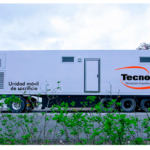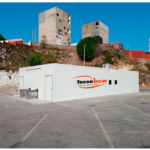Mobile Slaughterhouse vs. Modular Slaughterhouse
A Mobile Slaughterhouse and a Modular Slaughterhouse are solutions for animal processing outside traditional facilities, but they have key differences in design, flexibility, and purpose:
Differences Between Mobile and Modular Slaughterhouses
1. Mobility and Transport
– Mobile Slaughterhouse: Designed to be fully transportable, built on a platform or trailer that can easily be moved from one place to another. This allows slaughtering at different locations, ideal for livestock farms in rural areas that are far from traditional slaughterhouses or prefer not to transport animals.
– Modular Slaughterhouse: A demountable structure composed of modules that can be installed and relocated. Once assembled, it typically stays in one place for extended periods. Moving it involves disassembling and reassembling the modules.
2. Structure and Assembly
– Mobile Slaughterhouse: Generally has a compact design optimized to fit on a trailer or truck, with necessary equipment integrated into a limited space.
– Modular Slaughterhouse: Composed of independent modules that can be connected according to customer needs, allowing adaptation to different processes. The structure can be expanded or reduced based on demand, making it more flexible for certain configurations.
3. Capacity and Scalability
– Mobile Slaughterhouse: Limited capacity due to the need for portability. It is ideal for small farms or for meeting requirements in remote areas without access to conventional slaughterhouses. The work area is fully equipped and adapted with distinct zones:
– Dirty Zone (Stunning and bleeding)
– Clean Zone (Processing and evisceration) with Sanitary crossing
– Conservation Zone (Cold storage room)
– Control and machinery room.
The advantage of these units is that they can operate entirely autonomously anywhere, with integrated components such as a generator, water storage tanks, independent cooling unit, small internal cleaning unit, and, of course, all required hygiene and slaughter equipment.
– Modular Slaughterhouse: Offers greater capacity and scalability, as additional modules can be added according to production demand. Suitable for medium to large farms that need semi-permanent infrastructure. Depending on the final design, these units have various work areas:
– Dirty Zone (Stunning and bleeding)
– Clean Zone (Processing and evisceration) with Sanitary crossing
– Conservation Zone (Cold storage room) (optional).
These zones can be either in a single open space or separate areas. This type comes fully equipped with the necessary slaughter and hygiene equipment, a compressed air unit, control panel, and all quick connections for utilities such as water, electricity, etc., as well as all waste collection and disposal registers for removal at designated destination points.
4. Regulations and Uses
– Mobile Slaughterhouse: Its design complies with transport and sanitation regulations, allowing for itinerant slaughtering at different locations. This is ideal for small farmers seeking animal welfare certifications and wanting to minimize transport stress.
– Modular Slaughterhouse: Also complies with health regulations but is generally intended to be placed in a fixed location for a set period. It provides more space and equipment for processing more animals or performing various processing activities.
5. Cost and Maintenance
– Mobile Slaughterhouse: Contact us for details.
– Modular Slaughterhouse: Contact us for details.



